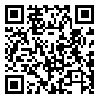Volume 4, Issue 2 (June 2025)
IJER 2025, 4(2): 0-0 |
Back to browse issues page
Download citation:
BibTeX | RIS | EndNote | Medlars | ProCite | Reference Manager | RefWorks
Send citation to:



BibTeX | RIS | EndNote | Medlars | ProCite | Reference Manager | RefWorks
Send citation to:
Shayesteh Mehr S, Taklavi S, Ghaffari O. (2025). Examining the Effectiveness of Mixed Reality-Based Exposure and Response Prevention Therapy on Disgust, Anger, and Anxiety in Individuals with Obsessive-Compulsive Disorder. IJER. 4(2),
URL: http://ijer.hormozgan.ac.ir/article-1-391-en.html
URL: http://ijer.hormozgan.ac.ir/article-1-391-en.html
1- Department of Psychology, Ard.c, Islamic Azad University, Ardabil, Iran
2- Department of Psychology, Ard.c, Islamic Azad University, Ardabil, Iran ,staklavi@iau.ac.ir
3- Department of Psychology, Ard.c, Islamic Azad University, Ardabil, Iran
2- Department of Psychology, Ard.c, Islamic Azad University, Ardabil, Iran ,
3- Department of Psychology, Ard.c, Islamic Azad University, Ardabil, Iran
Abstract: (992 Views)
Objective: The aim of this study was to investigate the effectiveness of exposure and response inhibition therapy based on mixed reality on reducing these emotions in people with obsessive-compulsive disorder.
Methods: This study was conducted in a quasi-experimental manner with a pretest-posttest design with a control group and a six-month follow-up. 40 participants diagnosed with obsessive-compulsive disorder using the Yale-Brown Obsessive-Compulsive Scale were selected and randomly assigned to two intervention and control groups. The intervention group underwent exposure and response inhibition therapy based on mixed reality for 12 sessions. Data were collected using the Haidt Disgust Sensitivity Questionnaire, the Spielberger Anger Questionnaire, and the Beck Anxiety Inventory. Data analysis was performed using repeated measures analysis of variance and Bonferroni post hoc test.
Results: The results showed that mixed reality therapy led to a significant reduction in disgust, anger, and anxiety scores in the intervention group compared to the control group at the post-test and follow-up stages (p < 0.001). The stage, group, and interaction effects in the analysis of variance were significant for all three emotions, and the effect size (η²) was reported to be 0.951 for disgust, 0.972 for anger, and 0.946 for anxiety, respectively. The difference between post-test and follow-up was small but stable, indicating the relative persistence of the treatment effects.
Conclusions: Mixed reality technology, as an interactive, safe, and controllable platform for exposure to arousing stimuli, was able to significantly increase the effectiveness of exposure and response inhibition therapy in reducing harmful emotions in OCD patients. Using this new technology allows for more effective emotion regulation, reduced avoidance behaviors, and improved quality of life.
Methods: This study was conducted in a quasi-experimental manner with a pretest-posttest design with a control group and a six-month follow-up. 40 participants diagnosed with obsessive-compulsive disorder using the Yale-Brown Obsessive-Compulsive Scale were selected and randomly assigned to two intervention and control groups. The intervention group underwent exposure and response inhibition therapy based on mixed reality for 12 sessions. Data were collected using the Haidt Disgust Sensitivity Questionnaire, the Spielberger Anger Questionnaire, and the Beck Anxiety Inventory. Data analysis was performed using repeated measures analysis of variance and Bonferroni post hoc test.
Results: The results showed that mixed reality therapy led to a significant reduction in disgust, anger, and anxiety scores in the intervention group compared to the control group at the post-test and follow-up stages (p < 0.001). The stage, group, and interaction effects in the analysis of variance were significant for all three emotions, and the effect size (η²) was reported to be 0.951 for disgust, 0.972 for anger, and 0.946 for anxiety, respectively. The difference between post-test and follow-up was small but stable, indicating the relative persistence of the treatment effects.
Conclusions: Mixed reality technology, as an interactive, safe, and controllable platform for exposure to arousing stimuli, was able to significantly increase the effectiveness of exposure and response inhibition therapy in reducing harmful emotions in OCD patients. Using this new technology allows for more effective emotion regulation, reduced avoidance behaviors, and improved quality of life.
Keywords: Obsessive-compulsive disorder, Disgust, Anger, Anxiety, Exposure and response inhibition, Mixed reality
Type of Study: Original |
Subject:
Educational Studies
Received: 2025/01/10 | Accepted: 2025/03/27 | Published: 2025/06/1
Received: 2025/01/10 | Accepted: 2025/03/27 | Published: 2025/06/1
Send email to the article author
| Rights and permissions | |
 |
This work is licensed under the Creative Commons - Attribution 4.0 International. |






